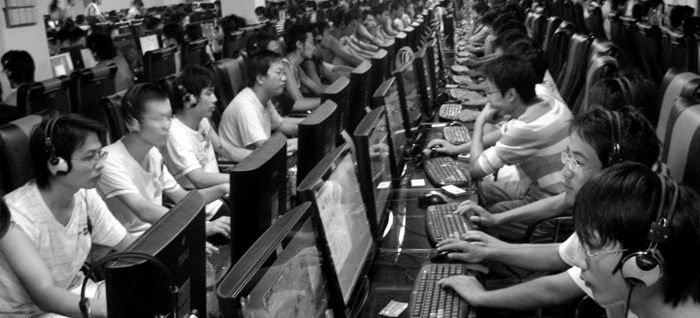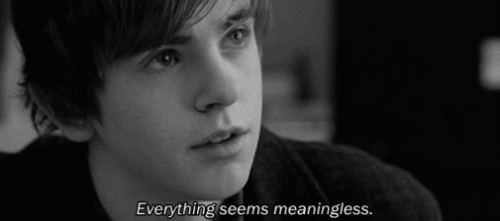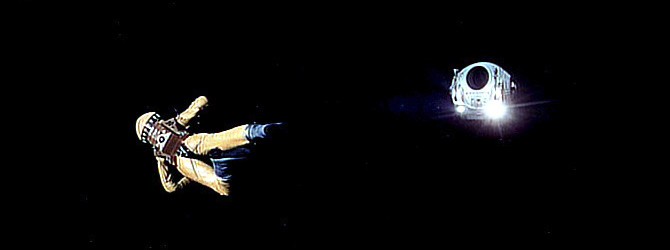The teacher as midwife – Socrates, Rousseau and 21st century pedagogy
 According to 21st century pedagogic sagacity, there is one overriding imperative for teachers: Don’t be the sage on the stage; be instead the guide at the side of your pupils. Instead of towering over their students like Platonic philosopher kings imposing a monarchical model of education, teachers must step down and stand alongside their students and humbly assist them in finding their own way along the path of learning. The chief apostle of the new pedagogy is Sugata Mitra, whose guidelines for teachers demand that they set the questions for their students but refuse to answer them, leaving the students to decide for themselves what the best answer is.
According to 21st century pedagogic sagacity, there is one overriding imperative for teachers: Don’t be the sage on the stage; be instead the guide at the side of your pupils. Instead of towering over their students like Platonic philosopher kings imposing a monarchical model of education, teachers must step down and stand alongside their students and humbly assist them in finding their own way along the path of learning. The chief apostle of the new pedagogy is Sugata Mitra, whose guidelines for teachers demand that they set the questions for their students but refuse to answer them, leaving the students to decide for themselves what the best answer is.
Among the shallows of 21st century online pedagogy one or two people think they see here the ancient Socratic idea of the teacher as midwife. Let us point out to them how very different the new view is both from the original ideas of Socrates and from those of his modern successor: Rousseau, who gave a very elaborate description of modern pedagogic midwifery in his 480-page book, Emile, published in 1760.
To really bring out the difference, we need to recall an idea that was even more important for Socrates than that of the midwife: the cave. For both Socrates and Rousseau every child is born with the ability to learn – the ability to enquire and know – but they are all born into a society dominated by ignorance. The cave is Socrates’s metaphor for a society blighted by the darkness of ignorance, and the role of the teacher-midwife is to help young people find their way out of that cave.
The distinctive feature of the pedagogic midwifery of both Socrates and Rousseau is their understanding of the truth that children leaving the cave of ignorance were to appreciate. In both cases the truth concerned what Socrates called the good. Socrates’s great contribution to philosophy was to insist that people spend less time arguing about the structure of the universe, and more time arguing about the values that they are to live by. Without turning his back on what we know as the sciences, it was obvious to him that the curriculum of the academy had to give priority to the debate about our highest values. Although Rousseau was a fierce critic of the academy (and of schooling in general), his pedagogy also gave priority to values, and his Emile refers again and again to a term that has now become almost obsolete: virtue. Despite their differences, both Socrates and Rousseau said the overriding aim of the teacher-midwife was to help young people appreciate the truth about the highest values in human life.
What makes 21st century pedagogy so massively different from the Socratic model is its denial that there can be a truth about those highest values. Of course, the new pedagogy is not blankly dismissive of the truth. The idolaters of digital technology show no skepticism towards the truth of science or towards the authority of the facts that self-educating students can find on Wikipedia. Their skepticism concerns only the truth of the values that we might live by.
This is not something peculiar to pedagogy; rather the pedagogues are simply affirming the dominant scientific view of where truth lies: Truth lies in the theoretical explanation of observable facts. The truth conceived in this way is impersonal and discursive, and so is cut off decisively from any personal experience of value. 21st century pedagogy simply takes this economy of the truth for granted and rests its case on it, ignoring all the voices that, for centuries now, have been raised against it.
The consequence of this is that 21st century pedagogy turns the Socratic method on its head. Instead of helping young people leave the cave of social ignorance it ensures that they stay inside. Our cave (very different from Athenian one, but a cave nevertheless) is one where the prevailing dogma insists that we cannot know the good. Ignorance is now official policy. Each of us can enjoy ourselves pursuing our ideas of the good, but none of us should presume that there is any knowledge here – a truth that might convince people that they would be right to challenge the rule of the 21st century technocrats. If we look carefully at where the 21st century pedagogic midwives are standing, we will see them guarding the exits of the cave. Anyone who thinks there is a way out must be turned back; any children who get the idea into their young heads that there might be a truth to live by is taught, with all the tenderness of the post-modern midwife, to confess their ignorance.
The best example here is Sugata Mitra’s idea of outdoctrination. Education ought to “outdoctrinate”, he says. To illustrate how that is supposed to work let’s imagine the following situation: A teenage boy is studying at a school in Salford in the UK with a teacher who is assiduously following the guidelines Mitra laid down for his self-organising learning environments. As the school year progresses the teacher notices that the boy is spending less and less time in his allotted group and has drifted off on his own where he has become immersed in something. In a quiet moment, the teacher manages to get him to explain. The boy (who has read Plato’s “Republic” and has a taste for metaphors) says that he has slowly come to see his class and the neighbourhood in Salford and the dark cacophony broadcast on television as disturbingly cave-like. He says he has been googling desperately to find a way out of this dark place, and he has come across the life and ideas of Yukio Mishima. He is certain now that Mishima is showing him the way, the truth and the life. He has started going regularly to the gym, and the once flabby Salford dreamer is becoming a lean self-taught Samurai warrior.
What does the 21st century follower of Sugata Mitra do when she sees the local boy from Salford turning Japanese? She might not be sure of the means to employ, but the objective prescribed by 21st century pedagogy is clear: She must get the boy to see that although Mishima had some interesting ideas, they were just interesting ideas – things to be entertained by, not reasons to turn Japanese. And she might hope the boy comes to see those ideas as the ideas of a rather unpleasant and problematic character – a man who could not come to terms with the modern world – a man we ought to criticise rather than follow. And so the boy who had been looking for the light beyond the Salford cave is brought back to the group huddled in the half-light around its tablet of silicon.
There is a strange dialectic of openness here (the one described by Allan Bloom back in the 1980s). If the discourse were able to use the word “virtue”, it would call openness the highest virtue, and the completely outdoctrinated person is supposed to be a paragon of openness. But openness at its best – like the openness of the boy in Salford – is an openness to the truth – an openness in which things experienced as being true can have a profound, life-changing effect. Without at least the hope that there might be a truth out there, openness degenerates into a new kind of closure – the closure of the person who is content with his cave, believing that there can be nothing of any great significance beyond it. It is immensely entertaining to watch the flickering images of the outside projected onto the walls of the cave, but none of them can possibly be taken seriously.
What sounds radical initially turns out to be utterly conservative – something that Herbert Marcuse would have called a one-dimensional pedagogy. Socrates, by contrast, was a genuinely radical figure, and he paid for his radicalism with his life. Rousseau, too, was a vehement critic of the anti-pedagogic Parisian culture (the culture of a city he said France would have been better off without), and he insisted that the only place to give Emile the education he deserves was somewhere far from the influences of the modern city.
Neither Sugata Mitra nor Ken Robinson need to worry about being forced to drink hemlock. Behind the rousing talk of a learner revolution is a resounding affirmation of the dominant trends in society (trends that rest on an epistemic dogmatism), and all their critical ire is expended on things like brick and mortar schools that aren’t keeping up with the times. Socrates was condemned for allegedly corrupting the youth – for leading them to question the prevailing untruth in the name of a new understanding of the truth. How very different things are now. Sugata Mitra wants to see the children studying genetics, keeping them connected to the internet (the 21st century equivalent of Rousseau’s Paris) feverishly teaching themselves about recombinant DNA. And Ken Robinson wants young people to slip effortlessly and uncomplainingly into the economy, finding something to do there that combines talent and passion (and here it is assumed that even the lucky ones need not be troubled by the rightness or goodness of the life they are leading and the system they are lending their support to).
The problem here is not that the pedagogy of people like Sugata Mitra and Ken Robinson is not radical enough (as if radicalism itself were an indicator of truth); nor is the problem that it is insufficiently Socratic (as if the Platonic texts were sacred measures of what is right and wrong); no, the problem, quite simply, is that it is bad midwifery.
The essence of a good educational midwife is a sensitivity to the most profound needs of the students – a sensitivity to something inchoate within them that needs some teacherly guidance to help raise it to consciousness and become articulate. Allan Bloom puts it this way: “Attention to the young, knowing what their hungers are and what they can digest, is the essence of the craft. One must spy out and elicit those hungers. For there is no real education that does not respond to felt need; anything else acquired is trifling display.”
Are there not intelligent hungers among the young that 21st century pedagogy dogmatically dismisses? Among those who have not yet been sucked into a thoughtless and overly commercialised culture are there not signs of a need for something that can be experienced as true? If so, how can a 21st century educational midwife justify ignoring such hungers as these? We hate to say it, but there is a risk here of midwives becoming abortionists.
A single example of the need being dismissed: At the time of writing over 33 million people have watched one version of the Lilly Allen song “Fear” on YouTube. It’s a song which, for all its disposable and inarticulate poppiness, dances around the moral void of the modern epistemic landscape. As the chorus puts it:
I don’t know what’s right and what’s real anymore
And I don’t know how I’m meant to feel anymore
And when do you think it will all become clear?
‘Cause I’m being taken over by the fear.
(The complete lyrics are here.)
Lilly sings about the fake usurping the real in a world where image is everything – a world in which it is impossible to know what’s right and what’s real anymore. “When will it all become clear?” For sensitive midwives in the tradition of Rousseau and Socrates, these are the big issues (bigger than anything going on in genetics), and Lilly is giving voice to an intelligent need that is ignored not only by current schooling but also by the unschooling being proposed by 21st century pedagogy.
There is a need here for a better kind of educational midwifery. To the young people who are searching for “what’s right and what’s real”, the most tweeted pedagogues say: “There is nothing to search for. Look at Gillian Lyne, for instance, she wasn’t looking for the truth, she was just developing her talent and becoming rich and famous in the process. Do the same, and everything will be fine.” But a better midwifery than this is possible – one that takes the deepest concerns of the young about the way we are living and helps them become as thoughtful and reflective as possible, connecting them to the works and ideas of people from the past who have been moved by precisely these concerns. In all probability the result will not be the clarity that Lilly Allen imagines, but rather a better understanding of the lack of clarity – an understanding that has no blueprint for the future, but that nevertheless understands the importance of finding a better way of life.
There is no question here of teachers copying either Socrates or Rousseau. There can be no going back even if it were desirable. The landscape has changed. In Rousseau’s day, for instance, things seemed to be easier. You just had to ensure that the child was far from the cultural clutches of Paris, and nature could more or less be left to take its course. Now the city limits of Paris encompass the entire globe. There is no escape. And in such a situation educational midwifery will inevitably be different and harder to accomplish. Rather than following Rousseau’s Emile, we need to completely rewrite it, but we need to do it in the spirit of Rousseau, which was the spirit of a dedicated, undogmatic educational midwife who is sensitive to the deepest intelligent needs of the young.
Although we don’t yet have a new Emile (and there are huge obstacles to instituting a form of education that questions the prevailing epistemic dogma), one feature of the new education would seem to be clear: it will be more Delphic. The whole process of raising the young person’s most profound intelligent needs to consciousness reconnects with the ancient Delphic imperative to know ourselves. Here, the new educational midwives will be correcting the error described so well by Camille Paglia, who saw young people leaving school technically skilled but drifting helplessly in a sea of unknowing, cut off from a living tradition of self-enquiry and self-knowledge.
The need for an education like this is not just personal, in the depths of the individual student, but also historical. Looking back at history, we see we have been living in a series of caves. Our own society, where truth and meaning have parted company, is no exception. There is no hope of leaving this cave if there is not a shared enquiry about who or what we are, about where we have come from, and where we are going. At the moment that enquiry is thwarted by its fragmentation into a science dogmatically cut off from experience and an art whose claim to truth is being denied. A new, more thoughtful culture of enquiry is needed to overcome that fragmentation. And if the new midwifery ever comes to pass it is to be hoped that it will prepare the ground for that more thoughtful shared enquiry about those ultimate questions.




“In both cases the truth concerned what Socrates called the good. Socrates’s great contribution to philosophy was to insist that people spend less time arguing about the structure of the universe, and more time arguing about the values that they are to live by. ”
That was contributed long before Socrates by the Vedantists. Sankhya on the other hand dealt with structure of the universe. The two schools combined form the basis of the Yoga philosophy.
I’ve started my school year teaching Plato’s Analogy of the Cave for the last 17 years. My students have many interpretations of what each part of the analogy represents, but they always understand that the preferred place to be is outside the cave. This analogy keeps being brought up throughout the year in discussions about literature or history.
The moral relativity that this article discusses leaves students blank slates that the corporate world will impress with their propaganda & consumer culture valuations. My hope is that my students see through this enough to seek the light outside the cave.
I appreciate the article & happened on it because I’ve been re-reading Alan Bloom’s translation of Rousseau’s Emile. The article coincides with much of what I’ve been thinking about education & our consumer society dictated by oligarchies of relativity.
Thanks for writing this. I intend to read much more of what you’ve written here.
How are we to live (together) now?